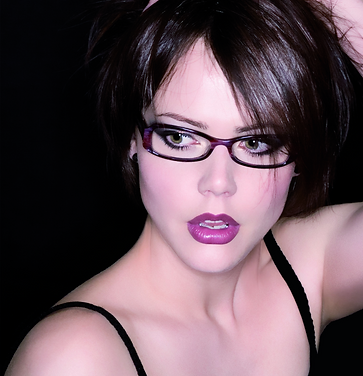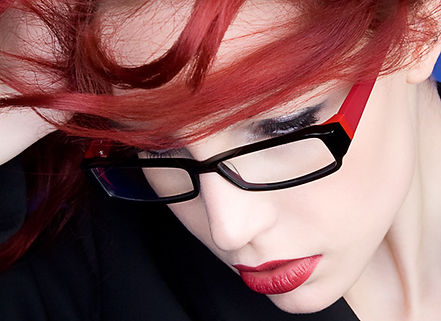
See the same person every time
Stella Rees opticians
We have moved
Please note we are no longer at Derby Road Lenton
We have moved to:
2 Main Street
Keyworth
NG12 5AD
0115 937 36 35 or 0115 94 22 030
For a more in depth look at all things eyewear related please visit our sister website
The first and main thing to remember is that your specs will sit on your face every day for the next 2 years or more so you want them to fit and be as comfortable as possible.
You'll also want them to look good and give as clear vision as possible.
Most people tend to think in terms of the frames but in reality it's the lenses that will have the major impact on weight and appearance.
Recent trends have been towards metal frames. The majority of these now have sprung sides which make them more comfortable to wear and more resilient. Materials include stainless steel and titanium, these add to the strength and help to keep the frames light. Titanium also has a "memory"
Budget Frames
We stock a wide range of specs from £45 complete with lenses
Designer Frames
We keep a wide range of frames from £75 with lenses
Premium frames
Run up to £200+ with lenses, these are for people who want the best and aren't prepared to compromise.


Key points
All our frames are priced to include single vision lenses.
Extras like bifocals, varifocals etc are clearly marked.
Most single vision specs can be ready in about an hour.
We make up nearly all specs in our lab so have complete control over making your specs as thin and light as possible.
Precal
For many years we have been proud to offer specs in less than an hour, however with Precal we have changed our philosophy a bit.
This process gives tailor made lenses for each frame, these will tend to be thinner and lighter than the equivalent lens made from a standard "stock uncut"
Each job can be individually assessed (some benefit, some don't) but most people are happy to wait a day or two knowing their specs will be as thin and light as possible.
One size fits all?
Not many people would wear
wellies to a social function or wear high heels to do the gardening
(OK I can think of one or two)
you tend to wear what’s best suited to the job in hand.
In the same way you might consider different spec solutions for different situations:
Social functions
Stylish, fashionable anti reflection coating on lenses
Office
Light, comfortable caters for correct working distance be it computer or reading
Workshop & gardening
Robust, scratch resistant, some level of eye protection arms length focus
Music
Arms length or beyond (3ft-6ft/1-2m) focus
Shopping
A good range of focus to see distance, arms length and small print on labels
Working outdoors
Photochromic or tint
Golf
The ability to see the ball in the
distance, mark a scorecard and not interfere with the swing
Fishing
See a float out on the water
polarised lenses score well here with the ability to tie a hook on fine line
There are many other possibilities
The point is each of the above will have different priorities so whilst you don’t need half a dozen pairs of specs knowing what you are going to be (primarily) using them for is useful when considering what to have.
I’ve been busy with a tape measure and will give a write up each issue on either a spec solution I have used for a specific task or if anyone wants to email with a particular problem (give working distances) I will try to answer here or pop in to work when we can demonstrate how we do it.
My computer specs
The specs I wear for working on the computer at home are unlike the specs most people reading this will have.
They focus at about 4ft (1.3 m) and have a depth of focus from about 50cm through to the TV at the far end of the room.
This is a much more distant focus point than what most people report when I ask them to measure how far away their computer is.
Anyone who has bought a table from Ikea will know why my monitor is so far back, everything there is about twice the size it seems when you see it in the store.
These specs work fine for computer, gardening and when I’m cooking where I can watch Emmerdale whilst chopping onions and follow a recipe on an ipad at 60cm and are fine for walking around
Well worth considering as an “about the house” prescription.
Easiest to demonstrate in practice if your interested.
My computer specs (part 2)
Last month I described the single vision specs I use for working on a desktop computer set around a metre away.
These work fine if I’m only working on the computer but are not so good if I have notes in front of me to read as well.
This month I have been trying a lens specifically designed for the task.
Basically it is a varifocal which has the top half focussed at computer distance (most people I’ve asked report a working distance of between 60 - 90cm I have mine set just beyond a metre)
Then they get stronger at the bottom to bring normal reading into focus.
For sitting at a desk they are brilliant, anyone who spends any amount of time on a desktop would probably benefit from a demonstration.
For non desktop work they are less useful so definitely a niche lens but what they do they do very well.
My computer specs (part 3)
Just to complete the picture I have been experimenting with a third option which is a bifocal lens, top half set at computer distance , bottom half set lower than normal for reading.
So far I’ve concluded that:
For a computer set fairly close around 60– 70cm with reading at a normal 30-40cm the office type lens works best
For a computer set further back around 1m+ and reading at the same 30-40cm the bifocal seems to be lens of choice.